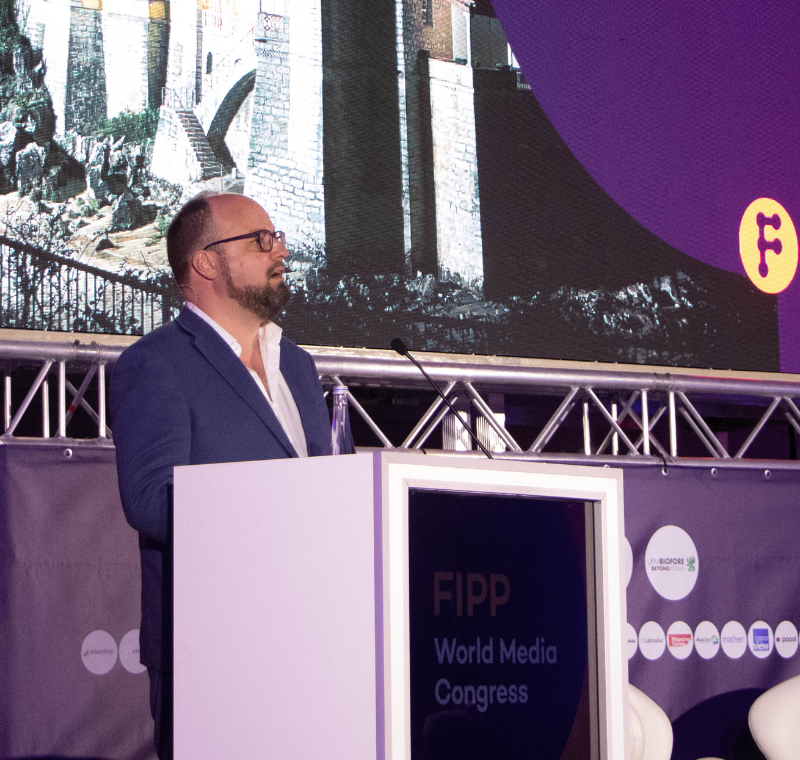Following your audience (even as they flee winter for sunnier climes)
Carole Beaulieu is the editor-in-chief and publisher of L’actualité, Canada’s leading French-language current affairs magazine. She is a multiple National Magazine Awards winner.
Since assuming the role of editor in 1998, she has overseen the transition from a print-only brand to what she calls a “multi-platform octopus.” With a circulation of over 125,000 in print, the brand has one million monthly page views and 475,000 monthly unique visitors to its website. It also has a robust social media presence, with over 208,000 followers on Facebook.
L’actualité is owned by Rogers Media.
Carole will be part of a panel on the role of language in media at the FIPP World Congress Toronto, Canada in October this year. The Congress takes place from 13-15 October.
• Register here to join her and 700-800 international delegates at the Congress
• See the provisional programme here
• See more speakers here
Carole spoke to Magazines Canada contributor Kim Pittaway about challenges in the Canadian media landscape, how the approach these, about her concerns and what excites her most about the future.
What do you see as the biggest challenge facing Canadian magazine brands?
Mass media no longer have a monopoly on advertising. The market has fractured, and advertisers now have many ways to reach audiences. Combined with that is the fact that consumers want their media to be mobile: they want to read what they want, where they want, on whichever device that they want. I tell my colleagues that a printed magazine used to be a mobile device—and it still is, but there are many new competitive mobile platforms. Our surveys tells us that readers still get a lot of satisfaction from the printed magazine, but advertisers have many other possibilities to reach their audience.
How has L’actualité addressed these challenges?
When I became editor 15 years ago, I was editor of a print magazine. Now we have a print magazine, a website, a tablet edition, an iPhone edition. And we have to create content for them all at the same time. And we’re doing it successfully: we are converting a high percentage of our readers to the tablet edition at a very quick rate.
Are there competitive factors in the Quebec market that differ from the market in English Canada?
La Presse newspaper invested heavily and early on in its tablet edition, which it offered for free to consumers. It did a lot of promotion, with kiosks in malls, at events, at concerts, so that people could see it and try it. Their efforts helped create a big audience in Quebec for tablet apps. It also created a business challenge for potential competitors, because they offered their app for free, and they really pushed the envelope with new creative ads and new ways for advertisers to reach readers. We are fortunate in that Rogers allowed us to go for it and to invest in our tablet app. We actually carry more content in the app than we do in the printed magazine, because we create original additional content specifically for it. And we’re getting a lot of traction with it.
How has transitioning to a multiplatform brand changed your audience?
I’ll give you this example: in the winter, we see a shift of tablet and website readers to Florida as they travel south away from the Quebec winter. So it has allowed us to continue to reach some of our audience who in the past left us behind when they travelled. At the same time, lots of younger people are discovering us through social media, and then moving on to the tablet or iPhone edition, or subscribing to the newsletters, so it is opening up new audiences. Our toolbox has exploded: we have more ways to reach people than ever before. Creating the best content hasn’t change much, but the way we disseminate it has.
You operate in a different language from your senior management in Toronto, in a market that is different from the market in English Canada. How does that affect the work you do?
L’actualité is like a small commando team in a large army. Large armies have resources but they don’t always know the local land well enough to make changes quickly. So there is an on-going conversation. We try to do what’s right for our market, and hope that they trust enough to do that. There are moments when what we want to do is not entirely aligned to the goals of the larger group and we have to back off—but we recognise that without the larger group, without the army, we couldn’t have gone this far to start with.
What concerns you as you look ahead?
I think there is an interesting tendency among some consumers who are looking for content but don’t seem to care what the source of the story is. I grew up in this industry with a keen awareness that the voice and authority of the brand was important, something that you developed and shaped, and it was part of what readers were attracted to and loyal to. It was like creating a house that the reader wanted to inhabit. But now readers can choose this living room and that kitchen and another back yard, all from different brands. So, are we seeing a new kind of reader? Or are readers changing the way they behave? And how does that affect how we create our content?
What excites you?
New technology has made it possible for a magazine living on the margin of the media empires to reach audiences it could not reach before. We could, for instance, decide to grow to the European market—not trying to cover France in the French market, but perhaps becoming the voice of North America for French-speaking audiences outside of North America. We would have to create a whole new business model to support it, but it does open up new possibilities. The frontiers are falling and we can create new products, develop new ideas, reach new readers.
Carole will be part of a panel on the role of language in media at the FIPP World Congress Toronto, Canada in October this year. The Congress takes place from 13-15 October.
• Register here to join her and 700-800 international delegates at the Congress
• See the provisional programme here
• See more speakers here
Don’t forget to subscribe to our newsletters for regular updates on the Congress and more from the media world.
More like this
Seven media leaders on the future, and what excites them about it
India Today Editor-in-Chief on what the future holds
Find out about the top media monetisation strategies from around the world








